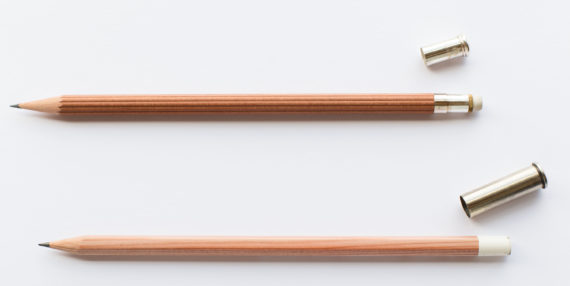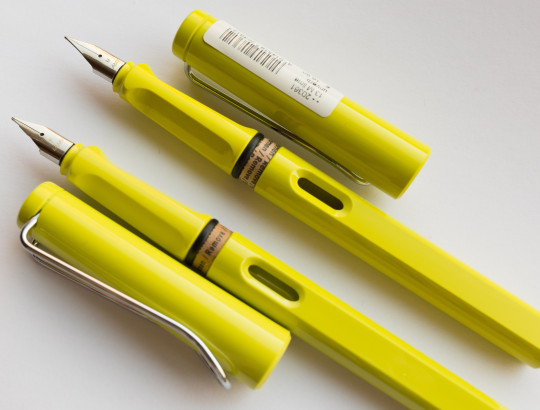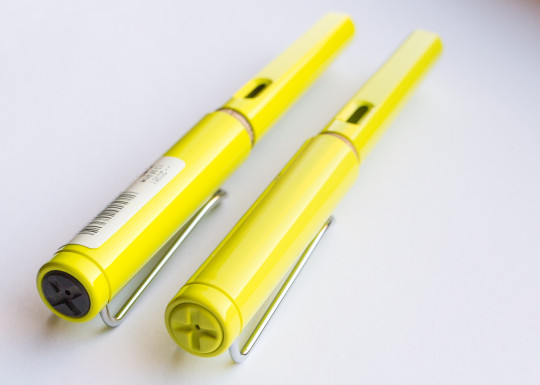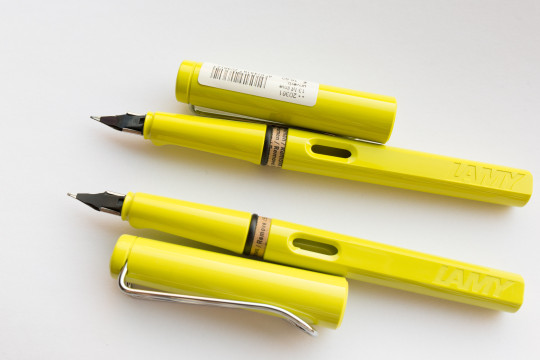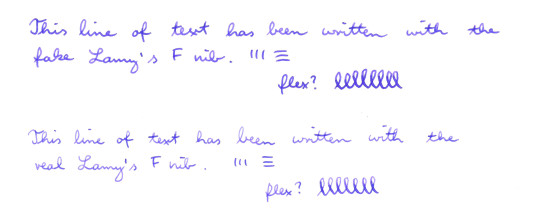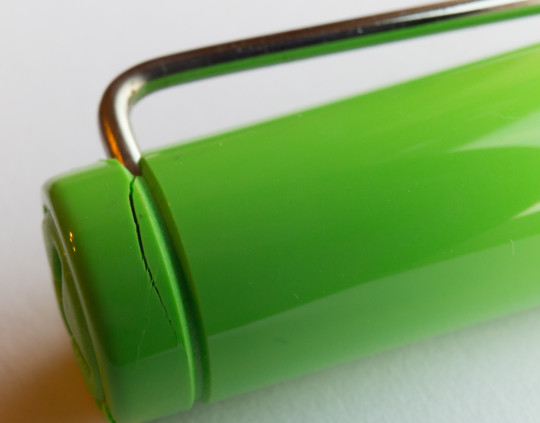Fake Lumographs
I get why there is a market for fake luxury pens, but creating fake versions of affordable pens seems rather ridiculous. In this case the pencil being copied costs less than £1. Yes, you could argue that £1 is much more than what you’d pay for a no name pencil …but if you think about how long a pencil lasts (when you use it the way it is supposed to be used [1]i.e. writing or drawing on paper, I mention this because if you use pencils e.g. to mark wood it won’t last very long, so a Lumograph might not be the best choice for that) then I have to say that the Lumograph is excellent value for money. You can enjoy writing with an excellent pencil for weeks or months for much less than what a coffee costs on the high street.
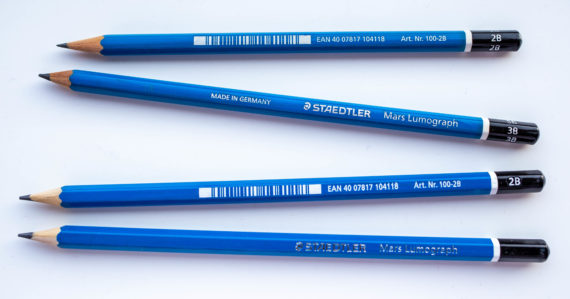
Bleistift blog reader Koralatov made me aware that fake Lumographs are being sold on eBay and I couldn’t resist ordering a pack to have a closer look.

Differences
The box
The fake Lumographs come in a Staedtler Box. In Europe the Lumograph usually not being sold in this box, but, and this was new to me, Staedtler confirmed that in Asia you can actually buy the Lumograph in this box.
Some of the information on the box doesn’t make sense for a graphite pencil. The lead protection that is being mentioned on the box (the triangular red logo you can see on the photo above) is a technology that is being used for coloured pencils, not for graphite pencils, so certainly has no place on Lumograph packaging.


The pencils
The wood being used is very(!) different to the one being used for real Lumographs. It is very pale, we’re talking basswood pale or even more pale.
The hardness is only printed on one side of the end of the pencil instead of being printed on all sides. Some pencils don’t have the hardness printed at all and for most pencils the indentation around the hardness is very deep, as if they have been stamped too hard.

The fake pencils are being sold as Chinese made factory seconds. Staedtler does produce the Lumograph in Asia, but it is made in Indonesia with German Leads. The real Indonesian Lumograph pencils are marked with “German Lead” instead of “Made in Germany” and use cheaper wood, like Jelutong. They are also sold in other Asian markets, as seen at this link.

Suffice to say that these fake Lumographs are very scratchy, even the soft degrees, and are not nice to use at all.
Since we’re talking about pencils: Here’s a bonus link for you: It’s a Dutch music album called Bleistift from 1981:
https://www.discogs.com/Bleistift-Bleistift/release/1914478 – I wonder how it sounds like. I assume it’ll sound quite different to the Pencil Revolution song.
References
| ↑1 | i.e. writing or drawing on paper, I mention this because if you use pencils e.g. to mark wood it won’t last very long, so a Lumograph might not be the best choice for that |
|---|




